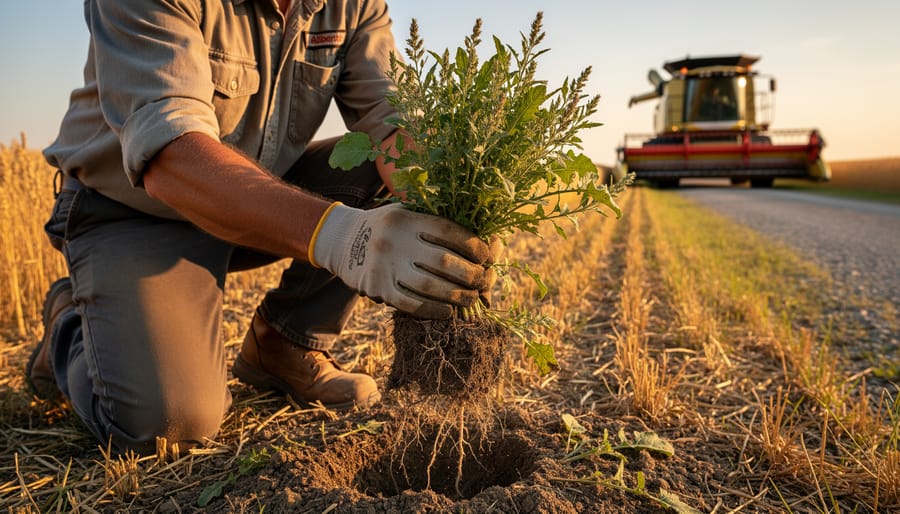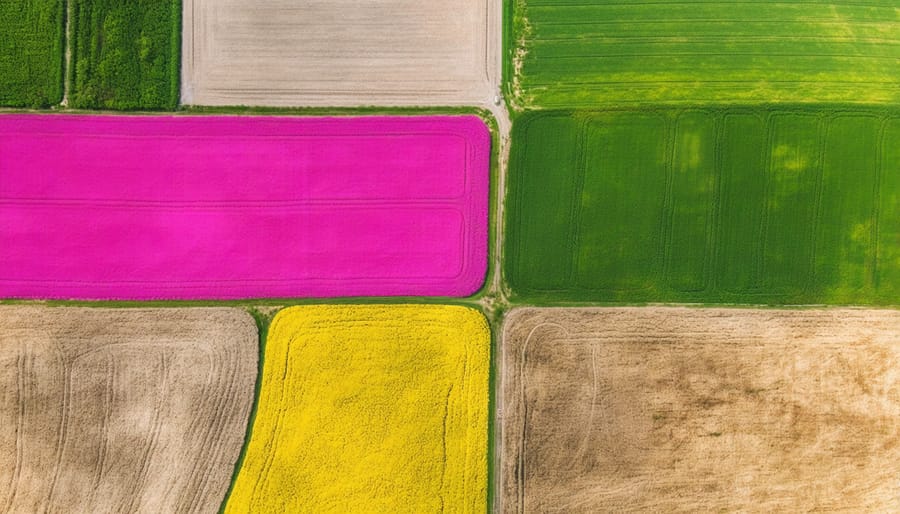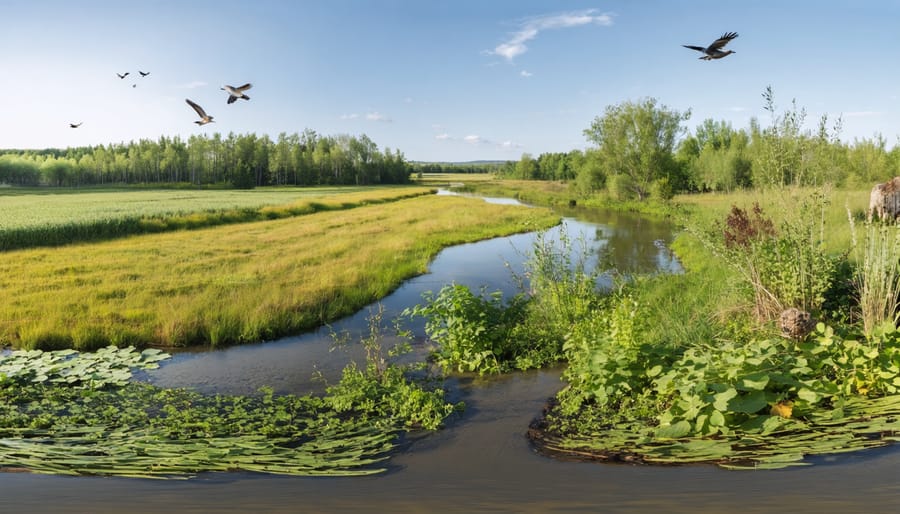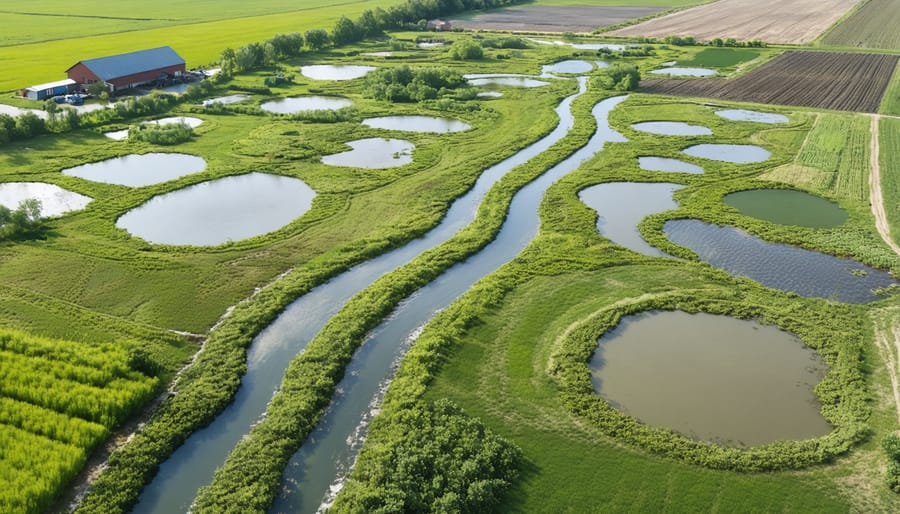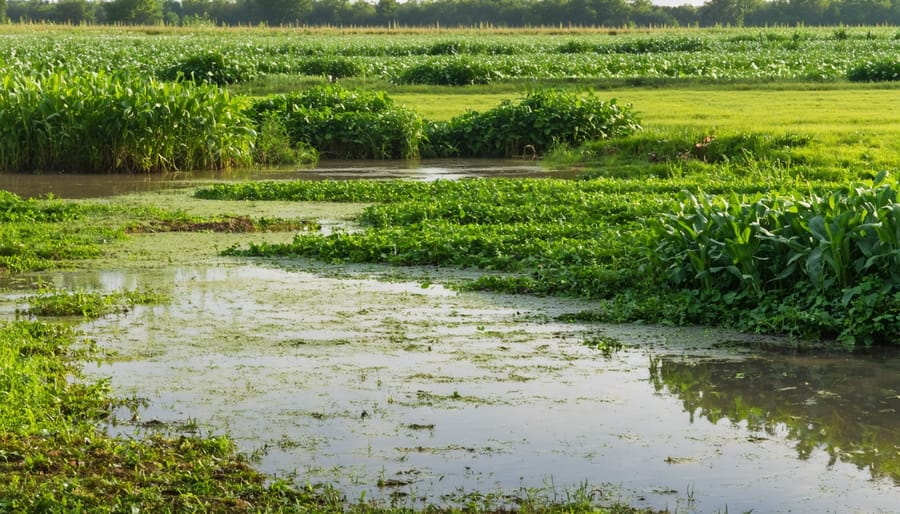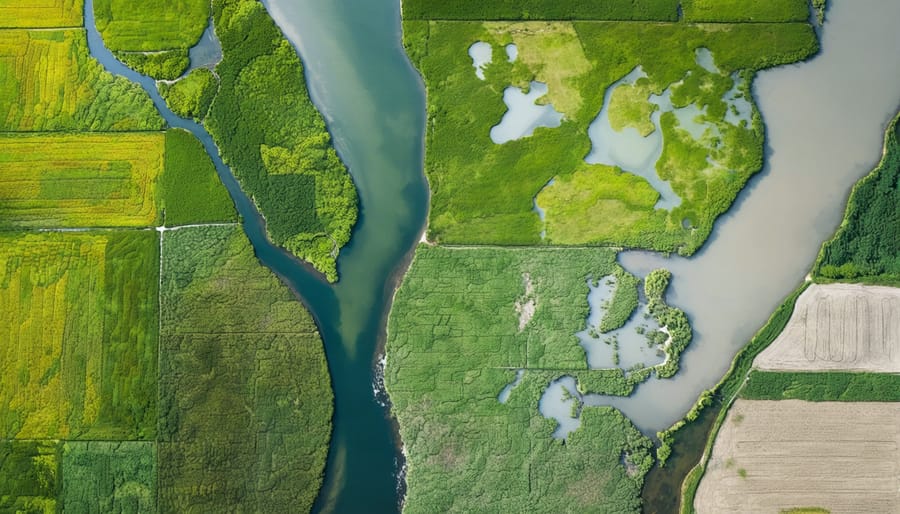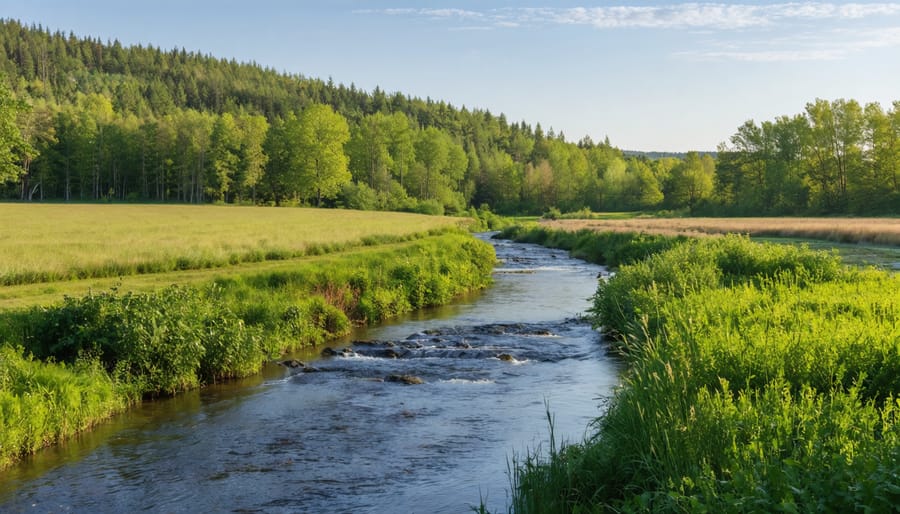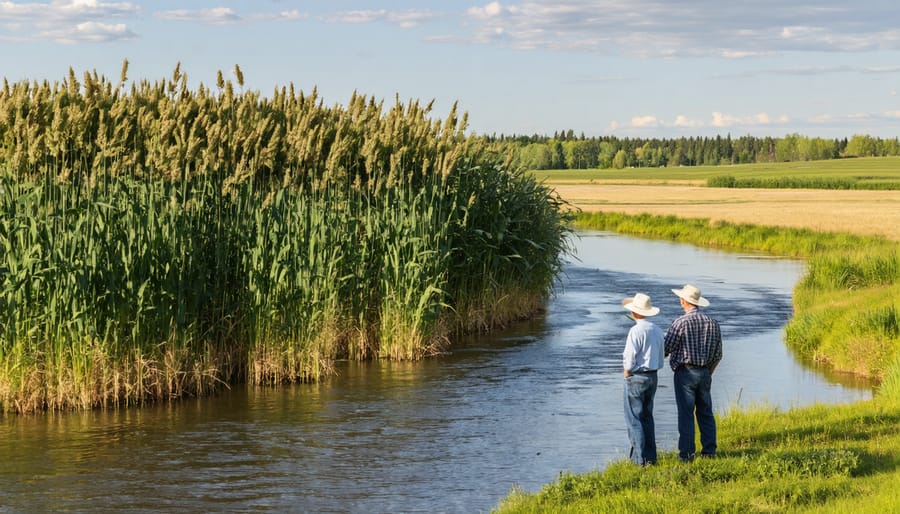Uncover the hidden potential of your land by asking crucial questions about biodiversity. Discover how the presence or absence of key species can impact soil health, pest control, and overall ecosystem resilience. Investigate the role of native plants in attracting pollinators and beneficial insects that keep your crops thriving. Explore innovative ways to create habitats and corridors that allow wildlife to flourish alongside your agricultural operations. By digging deep and seeking answers, you can unlock the power of biodiversity to transform your farm into a vibrant, sustainable, and productive landscape that will benefit generations to come.
How diverse are the plant species on my farm?
Assessing current plant diversity
To assess the current plant diversity on your farm, start by taking an inventory of all the crops you grow, including varieties within each species. Note the acreage devoted to each crop and consider factors like crop rotations and intercropping practices that can impact diversity. Next, explore the wild plants growing in non-cultivated areas such as field margins, hedgerows, and wetlands. Identify native species and beneficial plants that provide habitat or food sources for pollinators and other wildlife. Consult local field guides or seek advice from agricultural extension services for help with plant identification.
Consider the overall balance between cultivated and wild plants on your land. A diverse mix of both can support a resilient ecosystem. Assess whether there are opportunities to establish wildflower strips, restore native vegetation, or create buffer zones to enhance biodiversity. Observe patterns of plant growth and health across different seasons and years to identify any areas lacking diversity or vitality.
Engaging with other farmers, agricultural organizations, and conservation groups can provide valuable insights and resources for evaluating and enhancing biodiversity on your farm. By taking stock of current plant diversity, you’ll be well-positioned to make informed decisions about biodiversity conservation efforts moving forward.
Strategies to increase plant diversity
To increase plant diversity on your farm, consider companion planting by interplanting complementary crops that support each other’s growth and pest management, such as the indigenous “Three Sisters” combination of corn, beans, and squash. Implement crop rotations to alternate plant families across growing seasons, improving soil health and reducing pest and disease pressure. Preserve natural habitats like hedgerows, prairie patches, and riparian zones to provide refugia for native plant species and beneficial insects. Explore opportunities to integrate agroforestry practices, like shelterbelts and silvopasture, which introduce diverse perennial plants while providing additional benefits such as wind protection and shade for livestock. Collaborate with neighboring farmers and conservation organizations to create connected corridors of natural vegetation that allow plant populations to thrive at a landscape scale. By dedicating even small areas of your farm to native prairie restoration or pollinator-friendly plantings, you can significantly contribute to regional plant diversity while potentially accessing funding through programs like ALUS (Alternative Land Use Services) in Alberta.
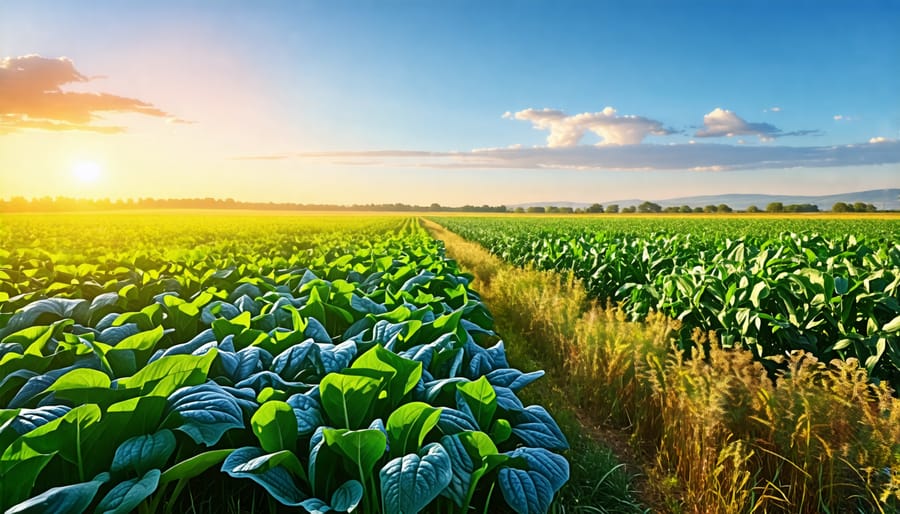
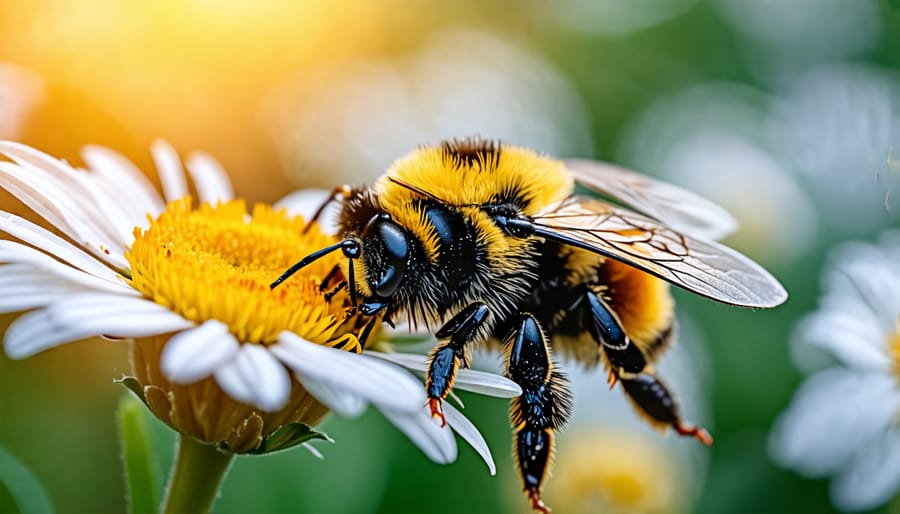
What role do pollinators and beneficial insects play on my farm?
Identifying key pollinators and beneficial insects
Alberta is home to a diverse array of pollinator and beneficial insect species that play crucial roles in maintaining healthy ecosystems and agricultural productivity. Farmers can learn to recognize common pollinators like bumblebees, honeybees, and various native bee species. Bumblebees are often larger and furrier than honeybees, with black and yellow or orange banding. Solitary native bees come in a wide range of sizes and colors, and can be seen visiting flowers or nesting in small holes in the ground or in wood.
Beneficial insects like ladybugs, lacewings, and hover flies are also important allies for farmers. Ladybugs are small, round beetles with red, orange, or yellow wings usually marked with black spots. Green lacewings have delicate, transparent wings and golden eyes. Hover flies mimic bees or wasps with their yellow and black striped bodies, but have large eyes and only one pair of wings. These insects prey on crop pests like aphids, mites, and caterpillars, providing natural pest control.
By familiarizing themselves with the appearance and behaviors of these key species, farmers can more easily monitor their populations and take steps to support their habitats on the farm.
Creating habitats for pollinators and beneficial insects
Creating diverse habitats is essential for attracting and sustaining pollinators and beneficial insects on your farm. Start by assessing your current landscape and identifying areas where you can establish pollinator-friendly spaces, such as field margins, hedgerows, or dedicated wildflower patches. Choose a variety of native plant species that provide nectar, pollen, and shelter throughout the growing season. Consult local experts or resources like the Alberta Beekeepers Commission for guidance on selecting the most suitable plants for your region.
Maintain these habitats by minimizing pesticide use, especially near flowering plants, and opt for targeted, low-impact pest management strategies when necessary. Mowing practices also play a crucial role in preserving pollinator habitats. Consider implementing a rotational mowing schedule, leaving some areas undisturbed to provide continuous refuge for beneficial insects. Additionally, creating nesting sites, such as bare soil patches for ground-nesting bees or installing bee hotels, can further support these vital organisms.
Remember, even small actions can make a significant difference in attracting and protecting pollinators and beneficial insects. By dedicating time and resources to creating and maintaining these habitats, you contribute to the overall biodiversity and resilience of your farm and the surrounding ecosystem.
Are there opportunities to integrate livestock into my farming system?
Suitable livestock species for integration
When considering livestock species for integration into Alberta farming systems, it’s essential to choose animals well-suited to the local climate, available resources, and overall farm goals. Cattle, particularly hardy breeds like Herefords and Angus, thrive on Alberta’s expansive grasslands and can play a vital role in managing pastures through grazing. Sheep, such as the Canadian Arcott or Rideau Arcott breeds, are another excellent option for mixed farming operations, as they can efficiently convert forage into wool and meat while helping to control weeds.
Poultry, including chickens, turkeys, and ducks, can be easily integrated into most farm settings, providing eggs, meat, and valuable manure for soil fertility. Heritage breeds like the Chantecler chicken are well-adapted to Alberta’s colder temperatures. Pigs, such as the Lacombe or Berkshire breeds, can be raised on a variety of feeds and contribute to farm diversity by rooting and fertilizing soil.
For farmers interested in niche markets or agritourism, more unusual species like alpacas, llamas, or even elk can be considered. These animals can diversify income streams through fiber, meat, or value-added products while adding a unique element to the farm ecosystem. Ultimately, the most suitable livestock species will depend on each farm’s unique goals, resources, and management practices, but Alberta’s diverse agricultural landscape offers numerous opportunities for successful integration.
Managing integrated crop-livestock systems
Managing integrated crop-livestock systems requires a balanced approach to optimize both biodiversity and productivity. Start by carefully selecting crops and livestock that complement each other and suit your local climate and soil conditions. For example, you might pair grazing cattle with perennial forages to improve soil health and reduce erosion. Rotating crops and livestock across different fields can help distribute nutrients, break pest cycles, and promote diverse plant growth.
Establishing buffer zones and wildlife corridors around fields and pastures provides habitat for beneficial insects, birds, and other creatures that contribute to a thriving ecosystem. Planting native tree and shrub species in these areas enhances biodiversity while providing shade and shelter for livestock.
Adopting practices like reduced tillage, cover cropping, and targeted grazing can improve soil structure, increase organic matter, and support a wider array of soil microbes essential for nutrient cycling and plant health. Regularly monitoring soil health indicators and adjusting management strategies accordingly is key to maintaining long-term productivity and biodiversity.
Collaborating with neighboring farmers, conservation groups, and agricultural extension services can provide valuable insights and resources for managing integrated systems. Attending workshops, field days, and networking events helps foster a supportive community of like-minded producers working towards common goals of sustainability and biodiversity conservation in Alberta agriculture.
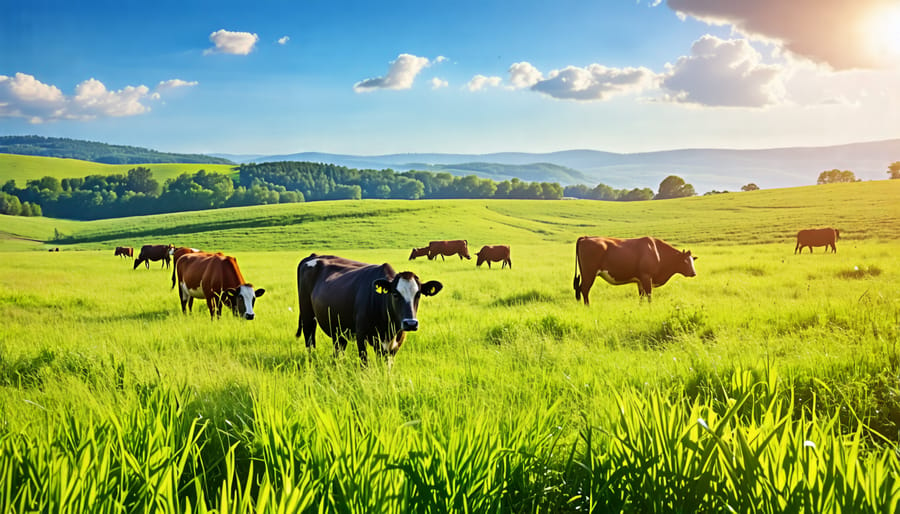
How can I monitor and measure biodiversity on my farm?
Simple biodiversity assessment methods
Assessing biodiversity on your farm doesn’t have to be complicated or time-consuming. Simple observational surveys can provide valuable insights into the variety of plants and animals thriving on your land. Start by regularly monitoring different areas of your farm, such as pastures, croplands, and natural habitats. Take note of the various species you encounter, including birds, insects, mammals, and plants. Keeping a journal or using a mobile app to record your observations can help you track changes over time.
Another user-friendly method is to focus on indicator species – organisms that are sensitive to environmental changes and can serve as a barometer for overall biodiversity health. For example, the presence of certain native bees, butterflies, or amphibians can indicate a well-balanced ecosystem. By learning to identify and monitor these key species, you can gain a better understanding of your farm’s biodiversity status without needing extensive scientific knowledge.
Engaging your family or farm staff in these biodiversity assessment activities can make the process more enjoyable and efficient. Encourage everyone to share their observations and insights, fostering a sense of stewardship and connection to the land. Remember, even small steps towards understanding and appreciating the biodiversity on your farm can contribute to more sustainable and resilient agricultural practices.
Collaborating with experts and citizen scientists
Collaborating with local experts, universities, and community members is a powerful way for farmers to gain a more comprehensive understanding of the biodiversity on their land. Partnering with knowledgeable individuals and organizations can provide access to specialized tools, methodologies, and insights that may not be readily available otherwise. For example, universities often have research programs focused on agricultural biodiversity, and their faculty and students can offer valuable assistance in conducting assessments and analyzing results. Local conservation groups and citizen science initiatives can also be excellent resources, as they often have a deep understanding of the region’s ecology and can help identify key species and habitats. By working together with these partners, farmers can develop a more detailed picture of the biodiversity on their land and identify opportunities for conservation and enhancement. Collaborative efforts can also foster a sense of community and shared stewardship, as everyone works together towards the common goal of promoting biodiversity and sustainable agriculture. So, don’t hesitate to reach out and build connections – the benefits for both your farm and the environment can be significant.
What support and resources are available to help me enhance biodiversity?
Government initiatives and incentives
The Alberta government offers several programs and incentives to support farmers in adopting biodiversity-friendly practices. The Canadian Agricultural Partnership (CAP) provides cost-sharing opportunities for projects that enhance environmental sustainability, such as wetland restoration, riparian area management, and native grassland conservation. Additionally, the Government initiatives like the Environmental Farm Plan (EFP) and Beneficial Management Practices (BMP) program offer financial assistance and technical support for implementing strategies that promote biodiversity, such as integrated pest management, cover cropping, and agroforestry.
The Conservation Cropping Protocol, a part of Alberta’s emission offset system, rewards farmers for adopting no-till or reduced tillage practices, which help maintain soil health and biodiversity. The Alberta Conservation Association’s MULTISAR program works with landowners to develop customized habitat conservation plans for species at risk, offering funding and resources to implement these plans. By taking advantage of these government-backed initiatives, Alberta farmers can not only contribute to the preservation of biodiversity but also improve the long-term sustainability and resilience of their agricultural operations.
Networking and knowledge-sharing opportunities
Alberta is home to a thriving community of farmers dedicated to sustainable agriculture and biodiversity conservation. Numerous farmer networks, workshops, and events provide invaluable opportunities for networking and knowledge-sharing among like-minded individuals. The Organic Alberta organization hosts annual conferences and field days, bringing together farmers, researchers, and industry experts to discuss best practices and innovations in organic farming. The Alberta Biodiversity Monitoring Institute (ABMI) offers workshops and training sessions on assessing and enhancing biodiversity on agricultural lands, empowering farmers with the tools and knowledge they need to make a positive impact. Additionally, the Ecological Farmers Association of Alberta (EFAA) organizes farm tours, allowing farmers to witness firsthand the successful implementation of biodiversity-friendly practices on working farms. These events foster a sense of community and provide a platform for farmers to learn from one another’s experiences, challenges, and triumphs. By actively participating in these networks and events, Alberta farmers can gain valuable insights, forge collaborations, and contribute to the collective goal of promoting biodiversity and sustainable agriculture in the region.
Conclusion
In conclusion, understanding and nurturing biodiversity on your farm is a powerful way to create a more resilient, sustainable, and thriving agricultural system. By asking the right questions and taking strategic actions, you have the ability to make a significant positive impact on the ecosystems that support your livelihood. Remember, even small changes can have far-reaching effects when it comes to promoting biodiversity.
As a Canadian farmer, you are in a unique position to lead by example and inspire others in your community to prioritize biodiversity conservation. By sharing your experiences, collaborating with fellow farmers, and staying informed about the latest research and best practices, you can contribute to a growing movement of environmentally conscious agriculture.
We encourage you to start by assessing your current practices and identifying areas where you can enhance biodiversity on your farm. Whether it’s planting native species, creating wildlife corridors, or adopting integrated pest management techniques, every step counts. By taking action today, you are investing in the long-term health and productivity of your land, your community, and the planet as a whole.
Together, we can build a future where biodiverse farms are the norm, and where the vital connection between agriculture and nature is celebrated and strengthened. The power to make a difference lies in your hands – so let’s get started on this exciting journey towards a more biodiverse and sustainable future for Canadian agriculture.


